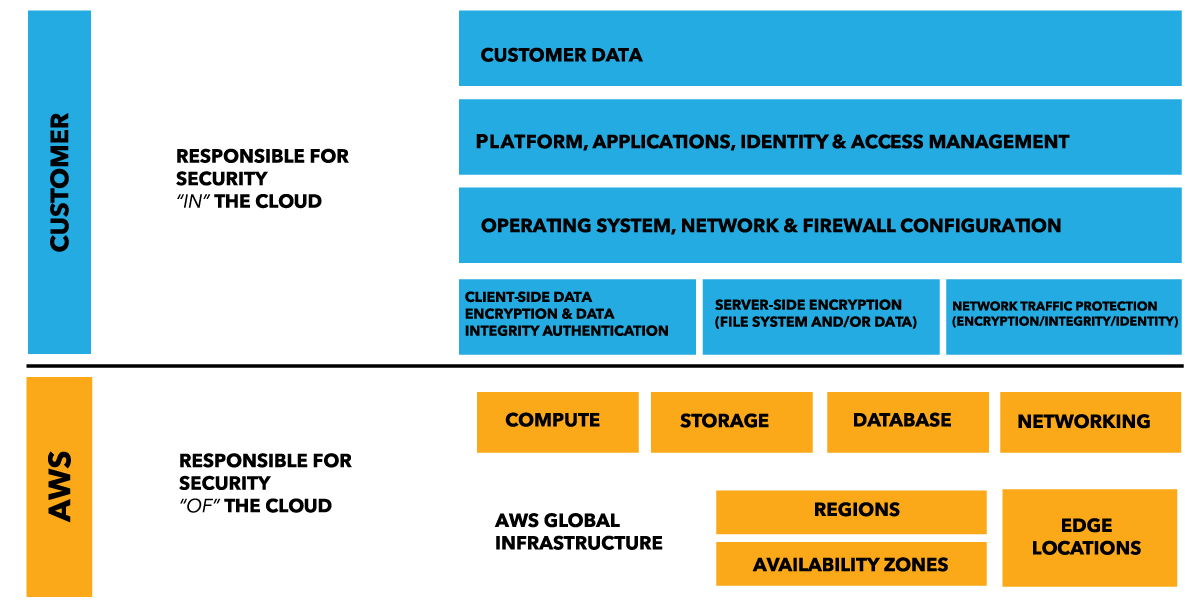Top 50 AWS Recommended Security Best Practices
1
MFA
Turn on multifactor authentication for the “root” account
2
Log file validation
Turn on CloudTrail log file validation.
3
Multi-region logging
Enable CloudTrail multi-region logging.
4
CloudWatch
Integrate CloudTrail with CloudWatch.
5
S3 Buckets
Enable access logging for CloudTrail S3 buckets.
6
Elastic Load Balancer (ELB)
Enable access logging for Elastic Load Balancer (ELB).
7
Redshift audit logging
Enable Redshift audit logging.
8
VPC flow logging
Enable Virtual Private Cloud (VPC) flow logging.
9
CloudTrail buckets
Require multifactor authentication (MFA) to delete CloudTrail buckets
10
CloudTrail
Enable CloudTrail logging across all AWS.
11
IAM users
Turn on multi-factor authentication for IAM users.
12
Multi-mode access
Enable IAM users for multi-mode access.
13
IAM policies
Attach IAM policies to groups or roles
14
IAM access keys
Rotate IAM access keys regularly, and standardize on the selected number of days
15
strict password policy
Set up a strict password policy.
16
Password expiration period
Set the password expiration period to 90 days and prevent reuseCustomer Visualforce pages with standard headers
17
SSL/TLS
Don’t use expired SSL/TLS certificates
18
CloudFront distributions
User HTTPS for CloudFront distributions
19
CloudTrail bucket
Restrict access to CloudTrail bucket.
20
CloudTrail log files
Encrypt CloudTrail log files at rest
21
Elastic Block Store (EBS)
Encrypt Elastic Block Store (EBS) database.
22
IAM roles
Provision access to resources using IAM roles.
23
EC2 security groups
Ensure EC2 security groups don’t have large ranges of ports open
24
restrict inbound access to EC2
Configure EC2 security groups to restrict inbound access to EC2.
25
root user accounts
Avoid using root user accounts.
26
Secure SSL ciphers
Use secure SSL ciphers when connecting between the client and ELB.
27
Secure SSL versions
Use secure SSL versions when connecting between client and ELB.
28
standard naming (tagging)
Use a standard naming (tagging) convention for EC2.
29
RDS
Encrypt RDS.
30
Root accounts
Ensure access keys are not being used with root accounts.
31
secure CloudFront SSL versions
Use secure CloudFront SSL versions.
32
Redshift clusters
Enable the require_ssl parameter in all Redshift clusters.
33
SSH keys
Rotate SSH keys periodically.
34
Discrete security groups
Minimize the number of discrete security groups.
35
IAM groups
Reduce number of IAM groups.
36
Unused access keys
Terminate unused access keys
37
Inactive or unused IAM users
Disable access for inactive or unused IAM users
38
Unused IAM access keys
Remove unused IAM access keys
39
Unused SSH Public Keys
Delete unused SSH Public Keys
40
Access to AMIs
Restrict access to AMIs.
41
Access to EC2 security groups
Restrict access to EC2 security groups.
42
Access to RDS instances
Restrict access to RDS instances.
43
Access to Redshift clusters
Restrict access to Redshift clusters.
44
Outbound access
Restrict outbound access.
45
Ingress access on uncommon ports
Disallow unrestricted ingress access on uncommon ports.
46
Access to well-known ports
Restrict access to well-known ports such as CIFS, FTP, ICMP, SMTP, SSH, Remote desktop
47
Existing custom apps
Inventory & categorize all existing custom apps by the types of data stored, compliance requirements & possible threats they face.
48
Development process
Involve IT security throughout the development process.
49
Application users
Grant the fewest privileges as possible for application users
50
Custom applications and all other cloud services
Enforce a single set of data loss prevention policies across custom applications and all other cloud services.
51
Protected health information (PHI) or personally identifiable information (PII)
Encrypt highly sensitive data such as protected health information (PHI) or personally identifiable information (PII).
52
How to protect sensitive data for its entire lifecycle in AWS

You can protect data in-transit over individual communications channels using transport layer security (TLS), and at-rest in individual storage silos using volume encryption, object encryption or database table encryption. However, if you have sensitive workloads, you might need additional protection that can follow the data as it moves through the application stack. Fine-grained data protection techniques such as field-level encryption allow for the protection of sensitive data fields in larger application payloads while leaving non-sensitive fields in plaintext. This approach lets an application perform business functions on non-sensitive fields without the overhead of encryption, and allows fine-grained control over what fields can be accessed by what parts of the application.
Learn more here
*
Source
AWS CCP Blog








